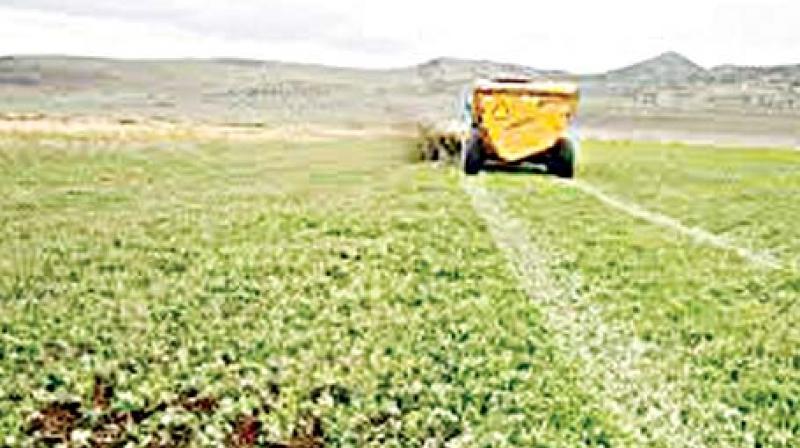The magic of carbon farming
Now, this humble age old practice of farming has now taken on a role, that is making climate activists and scientists smile.

Farmers have always been life givers, as they work to feed the millions in this planet. The service they provide of growing food for all of us is invaluable. This importance of farming is even greater for economies that are dependent on agriculture as the primary contributor to the economy. Now, this humble age old practice of farming has now taken on a role, that is making climate activists and scientists smile.
Until now, we know farmers who farm fruits, farm vegetables, farm millets, etc. but attention is now going towards farmers who farm carbon! And this is what is drawing the attention of the climate change community.
"There's a really significant potential for carbon farming worldwide to play a role in reversing the climate crisis," said Stedman, an agricultural consultant at AppleSeed Permaculture. Stedman explained that plants pull carbon out of the air and bury it in the ground. While this seems like an obvious truth that all of us learnt in school, the problem is when all the carbon is then released to the atmosphere because of the modern farming practices.
All agricultural production has photosynthesis at the centre of it. Plants use sunshine to combine carbon dioxide from the air with water and micro nutrients from the soil to produce plant material that we see growing in farms.
These plants have a root system that is below the ground that we do not see. As the plant grows, it stores some of the carbon it produces below the ground. As farmers till the soil and as live stock grazes, the carbon that is stored in the soil is released into the atmosphere. As much as one third of the Co2 in the atmosphere that is driving climate change has come from land management practices.
On the other hand, carbon can be stored in soils for decades and centuries too, and this process is called soil carbon sequestration. Carbon farming is a process when the rate at which Co2 is removed from the atmosphere and converted to plant matter is accelerated.
This results in reduction of Co2 from the atmosphere. Carbon farming is successful, when the amount of carbon that is removed from the atmosphere by the plants is greater than the amount of carbon that escapes into the atmosphere as a result of farming processes like tilling. So the trick is to now engage in smart farming practices that keeps this formula in mind.
Smart farming practices, like planting cover crops and spreading compost, can maximize carbon sequestration, which help in fighting climate change, and this is what is getting climate activists to now focus on this aspect of mitigation.
Carbon farming has to now become a focussed by product of all farming that is done across the world. Very few farmers will have a quarrel with this, as carbon in the soil is obviously good for farmers and the soil.
Carbon rich soils improve yields, make the produce taste better and is good news all the way. "An acre of land," said Stedman, "can store potentially anywhere from 10 to 100 or more tons of carbon through these excellent farming practices." So it all comes down to farming practices.
India as a country has a rich tradition and history of excellent organic farming practices that have all focussed on enriching the soil continuously, but all this knowledge was lost to the green revolution. It is time to bring back these practices, and combine them with the modern knowledge and techniques of carbon farming capture the twin benefits of chemical free agriculture, a cleaner atmosphere that is rid of more Co2.

